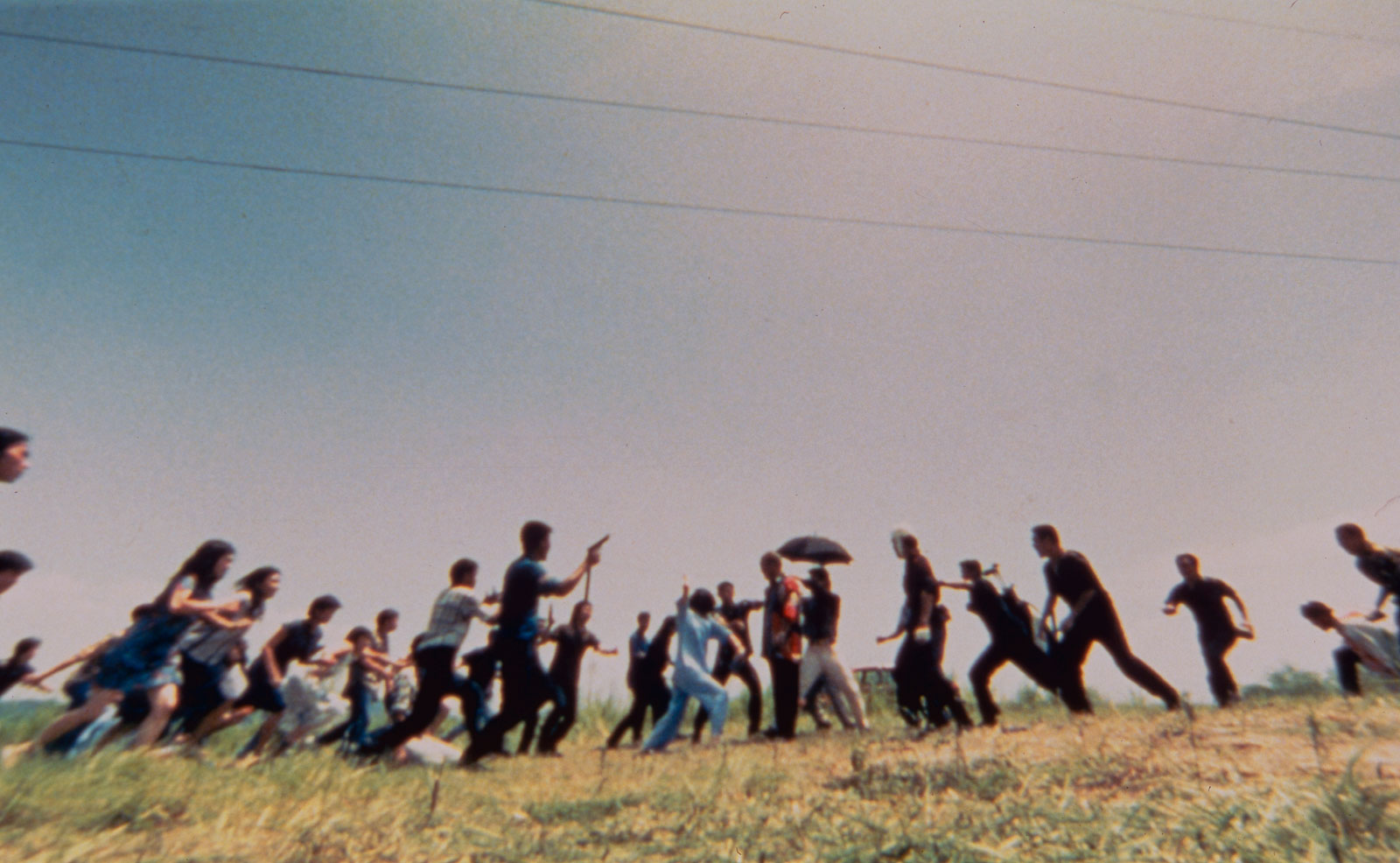
 After a good six months of watching nothing newer from Hong Kong than 1995’s Peace Hotel, I’ve recently begun catching up on the stuff that’s come out in the past couple of years. The development that I was most curious about (aside from the big budget epic swordplay picture, The Storm Riders) was the rise to prominence (in critical circles at least) of the Milkyway Image group. Well, I finally broke my Milkyway cherry (in big way) with Wai Ka Fai’s Too Many Ways to Be No. 1 and, to be honest, I feel like a prime asshole for having waited so long. This is a phenomenal movie.
After a good six months of watching nothing newer from Hong Kong than 1995’s Peace Hotel, I’ve recently begun catching up on the stuff that’s come out in the past couple of years. The development that I was most curious about (aside from the big budget epic swordplay picture, The Storm Riders) was the rise to prominence (in critical circles at least) of the Milkyway Image group. Well, I finally broke my Milkyway cherry (in big way) with Wai Ka Fai’s Too Many Ways to Be No. 1 and, to be honest, I feel like a prime asshole for having waited so long. This is a phenomenal movie.
At ground zero, it’s the story of some sad sack triads who are trying to move their way up in the world. It’s a pretty standard setup as the gangsters, led by Lau Ching Wan, stumble their way through the minefield that is the triad life. It’s the refreshing deviation from this standard plot in which Too Many Ways shines however. Far-removed from the slick, attractive style that is the stereotype of a Triad picture, Too Many Ways feels like it was shot by the love child of Samuel Beckett and Ringo Lam with a script provided by David Lynch. At once absurdist and gritty, this film consistently kept my eyes wide open awaiting the next curveball.
An example of this, and one of my favorite aspects of the film is the creative temporal structure. When it’s all said and done with we are presented with the idea that nothing that we have watched happened at all. The entire "real world," definable narrative is about three minutes worth of a conversation and its immediate aftermath. The rest is all an exploration of the possibilities stemming from this encounter. That’s a kick in the head that works.
 As for those possibilities, much of this film falls really close to freak show territory. It’s packed full of certifiably screwed-up situations, unattractive and visceral acts of violence (although somehow much of the violence is played for laughts- go figure) and a bizarre set of coincidences. Also, as it’s shot in a surrealist, playful style and is populated by the worst dressing Triads you’ve ever seen, Too Many Ways is in some ways a complete antithesis to the work of John Woo (which is interesting because Wai Ka-Fai directed the Woo produced Peace Hotel). It lacks (intentionally) the stylistic beauty of Woo and his many imitators and instead offers a much harsher (and much funnier) take on a world ruled by violence. It is darkly funny and addictive as a viewing experience, but it’s definitely not attractive. I mean, Quentin Tarantino isn’t going to be aping Lau Ching-Wan’s sartorial style in this flick anytime soon (which he did with the seminal Woo character, Mark Gor from A Better Tomorrow).
As for those possibilities, much of this film falls really close to freak show territory. It’s packed full of certifiably screwed-up situations, unattractive and visceral acts of violence (although somehow much of the violence is played for laughts- go figure) and a bizarre set of coincidences. Also, as it’s shot in a surrealist, playful style and is populated by the worst dressing Triads you’ve ever seen, Too Many Ways is in some ways a complete antithesis to the work of John Woo (which is interesting because Wai Ka-Fai directed the Woo produced Peace Hotel). It lacks (intentionally) the stylistic beauty of Woo and his many imitators and instead offers a much harsher (and much funnier) take on a world ruled by violence. It is darkly funny and addictive as a viewing experience, but it’s definitely not attractive. I mean, Quentin Tarantino isn’t going to be aping Lau Ching-Wan’s sartorial style in this flick anytime soon (which he did with the seminal Woo character, Mark Gor from A Better Tomorrow).
All in all, Too Many Ways is a film to be reckoned with on a lot of levels and it gets an unqualified recommendation. One of the better movies I’ve seen recently.
Originally published on the DrunkenFist.com in 1999.